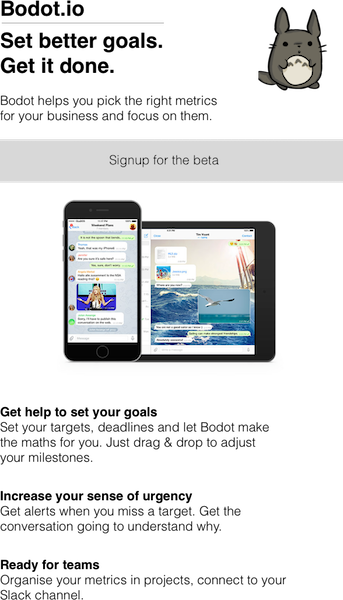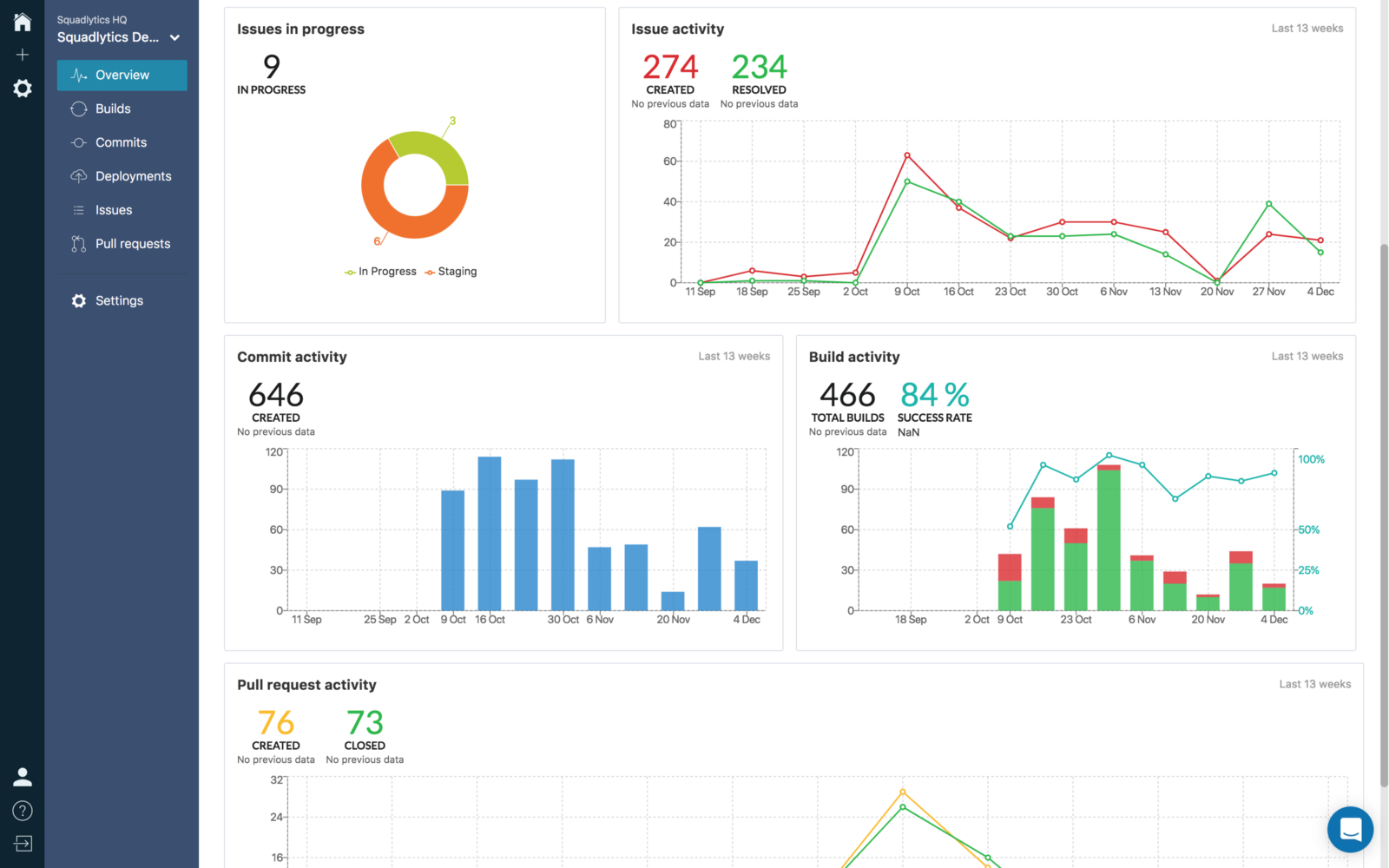Turning an idea into a beta in 12 months — all while waiting for baby #2

Today we’ve officially launched the public beta of Squadlytics after spending a couple of months in private beta.
It’s a bit of a personal victory as the journey to get there had its fair share of challenges to turn what was a vague concept about a year ago into a product, with actual people using it. To give some context here are a few things that happened the past year:
- Almost exactly a year ago I quit my happy job at Atlassian to go try new adventures.
- 10 months ago we moved to Lisbon with my wife and son.
- 3 weeks ago our second baby was born.
- Yesterday our son turned 2.
If you don’t have kids it might be hard for me to explain the challenges that come with starting a business while also having a toddler and another baby on the way. If you do have kids I need not say more. But regardless of your situation I have learned a few things that I believe can be applied in all situations.
But, what’s Squadlytics?
If you’ve visited our website you might know what the features of Squadlytics are but not necessarily get what value it delivers. It’s a bit funny for me to admit publicly that the story-telling on our website isn’t great but I’ll get to that later. I can use more words here so please read below if you want to know why we built this platform.
There are many great tools today to help teams build software but the problem is that you end up doing a lot of juggling to get an understanding of the state of your projects. So, people end up building their own dashboards and spend a significant amount of time figuring out what metrics to display and how to get them.
This is where I started, 12 months ago, by wondering if there was a better way to help teams keep a finger on their pulse. An early box exercise capture the essence of it.

After a few iterations the idea evolved into a bigger project to become a Productivity Health platform for teams. We’re currently in the phase 1 of our plan and it’s about helping teams answer the 3 following questions:
- How is our productivity trending?
- Is there anything that requires immediate attention?
- Can we do something to get better over time?
Instead of calculating complex productivity number and coming up with proprietary formulas, we simply connect to your tools (issues, code, releases…) and present the data in better ways to help you visualize your activity.

The dashboards, metrics and alerts are opinionated to keep things ultra simple to manage. Instead of asking you to pick charts among a dozen different ways of viewing issues you simply connect your issues and then we’ll populate the dashboards for you. It’s important that you quickly get the information you need to take action and spend less time setting up the views.
Ultimately, the goal is to help you achieve better tranquility by making projects and team flow easier to understand. The more you know yourself, the easier it is for you to improve.
Pheeeew that was a bit of a long introduction, and as I said before it’s a bit of a shame that this is not clearer on the website but this is what I’m going to talk about next.
Building a beta while also growing a family
Learning to let go and focus on one thing at a time
I’ve always been pretty good at keeping an objective perspective on projects I’ve been involved on. That is, until it was actually my own startup.
Nothing beats real customer feedback so the sooner you can get someone you don’t know to tell you what they think than the better. While I know this and have always embraced this way of working in the past it took me some time to adopt the same line of thinking with Squadlytics. For the most part of the project I’ve been a single founder and there’s definitely a hard limit to how much you can do in a day. And with kids in the mix it gets more interesting as sometimes your working hours get truncated without much of a warning.
So, one of the skills I had to quickly learn was how to focus on high-level goals and let go of things that were not core to it. In practice that meant doing things like putting a not-so-clear-landing-page because the high-level goal was to get at least one customer to stick to the product — and I could explain Squadlytics on the phone rather than on the website. And it meant as well putting the beta out for grabs while knowing the on-boarding is not perfect — because our high-level goal is to get real feedback, even negative, as it will always get you where you need to be faster.
Dividing days in fixed + bonus time
I don’t know how it is for others but starting a business definitely requires having a pretty high level of confidence for me. There’s a certain amount of time that you spend turning an idea into something concrete, and while early feedback can help strengthening your story there’s still a fair way to go until you have a proven and sustainable business.
In my case I rely a lot on achieving smaller milestones to fuel my momentum and keep going at it. It’s your typical snowball analogy where small things can turn into a big one and it works most of the time. The difficulty in my situation lies in the fact that toddlers have agendas of their own, and if my family needs me then I drop whatever I’m doing to help.
That caused some friction at the beginning because I felt like I never had enough time to build my momentum. But my biggest frustration was about looking and feeling upset around my loved ones because quitting my job was also to make sure I would be spending more time with them.
So I started to go at it a different way and decided the following: on any given day if I’m able to do 3 hours of solid uninterrupted work then it’s a good day. And then there would be another 4 hours that I need to treat as bonus. In this context I can celebrate every time I get 7 hours of work, which is most days anyway. But if I only get my 3 hours in the morning then it’s still a good day. This is obviously a mental exercise but happiness comes from being able to match expectations and reality. So, by changing my expectations I make it easier for me to enjoy this journey — whether it is when I spend a full day working on things, or if I come home early to look after a sick little boy that just want cuddles from his parents.
Seeking criticism early
It’s not a product if no one is using it.
Back in my previous job getting feedback was as easy I saving a draft on the intranet. It wasn’t surprising to get a comment soon after from someone you did not know, working in a different office, that had some thoughts about what you were trying to do. And sometimes you’d think “wait, I wasn’t done with this!”
It’s only now that I can fully realize how great this was. Criticism is what helps strengthen business case, expand horizons, trash bad ideas. So instead of keeping Squadlytics in a precious box our strategy is to reach out to the community to help us build a better platform.
Following the great example of Baremetrics we have made our own metrics public and opening the beta today is good way for us to get a better understanding of how we can improve.
Finally, my biggest thank
There’s a lot of people that helped me to this day but one in particular deserve special credit. This adventure would not be possible without my wife Nerida who has been extremely patient and supportive, all while carrying our second baby in a country that was foreign to her.
Her strength and courage are an inspiration and I owe her so much.
You can try Squadlytics today by signing up on https://squadlytics.com

